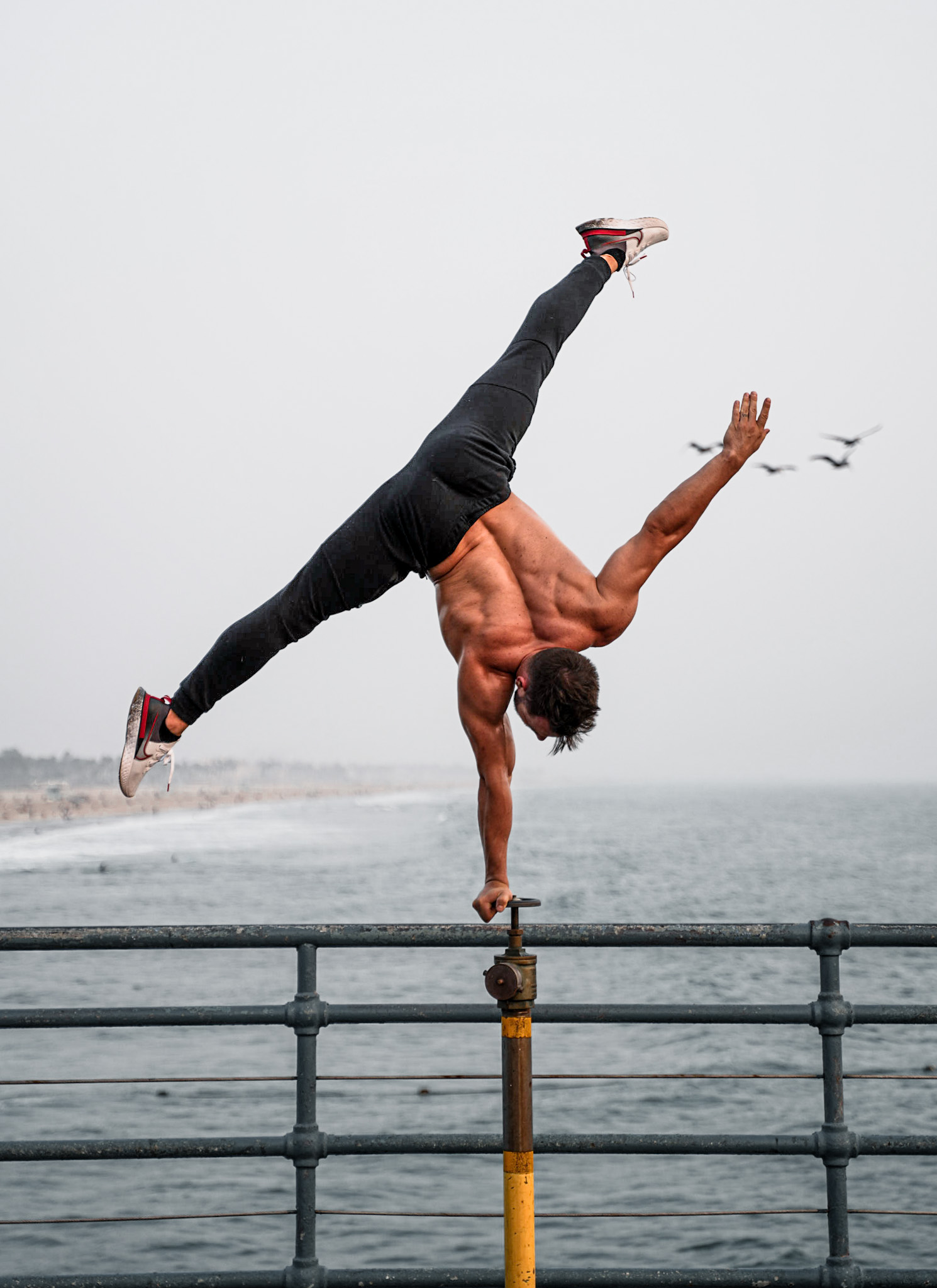Control. Do not Balance
When training handstands many search for that golden point of balance. Many believe there is a moment when your handstand is perfectly aligned, easy and floating weightless in the room. While a well aligned handstand is easier than a banana handstand balancing on your hands upside down never really gets easy! It is constant work.
There are 2 key concepts that are important here:
1.) your handstand wants to move
You want to change positions, maybe walk, maybe go on one hand or do a backbend. No matter what it is that you want to do, you need to have control. Any action has a reaction. If I open one leg into a straddle force travels from my hips, through my shoulders and into the floor. If I am “only” perfectly balanced this pressure will throw me off balance, I will rotate and fall. If instead I move my weight slightly into the fingertips to have actual control over simple balance I would be able to push back against this pressure and make the movement appear effortless.

2.) constant work

Let’s imagine we are waiting for the bus. For some reason we have decided that today we will wait for the bus standing on only 1 foot and with closed eyes. Now you will realize that by no means you are standing perfectly still. On the contrary your ankle is constantly working, balancing and controlling.
It is exactly the same on your hands. You are upside down starting to fall in 1 direction, you realize that you are falling, you process what is happening and start your counter maneuver. You catch yourself and push back towards your straight and efficient line. Since you are still new to this you pushed a bit too far and now you are falling over in the opposite direction. You play the same game again: analyze, react, overpush etc.
Over time you get better and faster at realizing that and in which direction you are falling. Additionally, these reactions will get more precise and over time you will create the illusion of perfect stillness, of effortless perfect balance.
While this handstand might look like it is in perfect balance and that nothing is moving, if you take a close look at a hand balancer’s forearm muscles you will see that they are constantly engaged working to keep the body in balance.
While floating or this golden point of balance exists to some degree you will never have actual control in that position. It is physically easier to stand on the middle of your foot yet you will not be able to catch a heavy ball or sprint forward just like it is easier to relax on the back of the hand instead of pushing your weight towards the front. The problem with the easy and comfortable is that you will be limited technically tremendously and you won’t be able to shift shapes. You will hit a plateau very soon and won’t be able to progress much further. So instead.